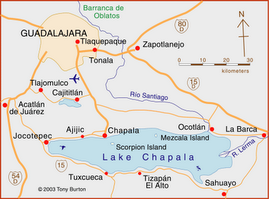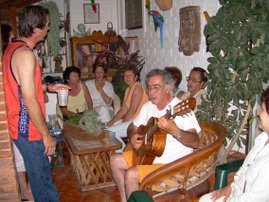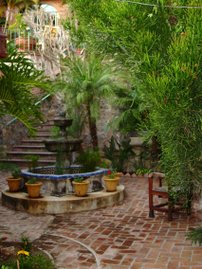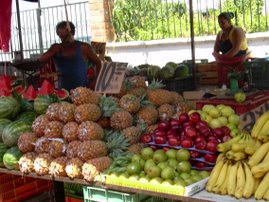As I write this, we are getting ready to fly to New England on Tuesday for our trip to Maine. We will be staying in Kennebunk again in the condo owned by our friend Beth Ayotte. We are very familiar with the place now, and it is conveniently located near the beaches, and not far from Lewiston and Portland where Wendy and Cassie live. Eric, Crystal, and Isabelle will be coming to Maine to visit, and we will also be able to visit Pixie’s brothers and sister. We will travel to Gloucester, Mass. while we are there to visit my brothers as well. At the end of the visit, we will fly down to Philadelphia to visit my dad who is celebrating his 91st birthday today! We will be back in Mexico on August 2.
Again, we used housecarers.com to locate a house sitter to stay in our house and watch Chuy while we are gone. His name is Peter Podesta. He is originally from New Jersey but lately has lived in northern Florida. He has been to Mexico many times, last summer spending a month in Guadalajara studying for certification to teach English as a second language. He is considering locating here for part of the year at some point. His wife is still working, so he is here now by himself. He and Chuy seem to get along well. He brought Chuy a perfect gift: a new ball! His old one was wearing out, and this one blinks many colored lights when it is bounced. Chuy is in heaven! Here are Peter and Chuy on our walk this morning.
Other than getting ready for the trip, we have been enjoying the cooler weather. We have had some good times with Matty and Fiona from Australia who, you may remember, are house sitting for our friends and neighbors, Fred and Mardele. Fiona is a vegetarian, so we’ve gone to the organic market together and we got together to cook and share a vegetarian meal together. We made a pumpkin ginger soup and Matty made some wonderful California sushi rolls (pictured below), and Fiona made a roasted vegetable salad and ginger-mint-chia seed tea. Here are photos of Matty’s Clifornia rolls and Matty, Pixie and Fiona at the table.
The organic market is catching on here and growing each week. We often buy veggies, homemade whole grain bread, chocolate and honey there. Here are some photos.
Pixie has been sewing an outfit for our granddaughter, Isabelle. She was having a few problems with the project, so our friend Bebe came over to help. Here they are:
We also enjoyed a dinner with our friend Marni and my student, Francisco. They did not know each other but found much to talk about. Here are some photos of the evening:
So, I won’t be posting as much over the next several weeks, but I will post some family photos while we are in Maine. We’ll look forward to being back here in August. Then, on August 24, we will be making our first trip to Mexico City with some of our friends. I will definitely have some interesting photos to post from that trip! In the meantime we’ll be enjoying some family time, some lobsters, and some good dark beer!





















































































































